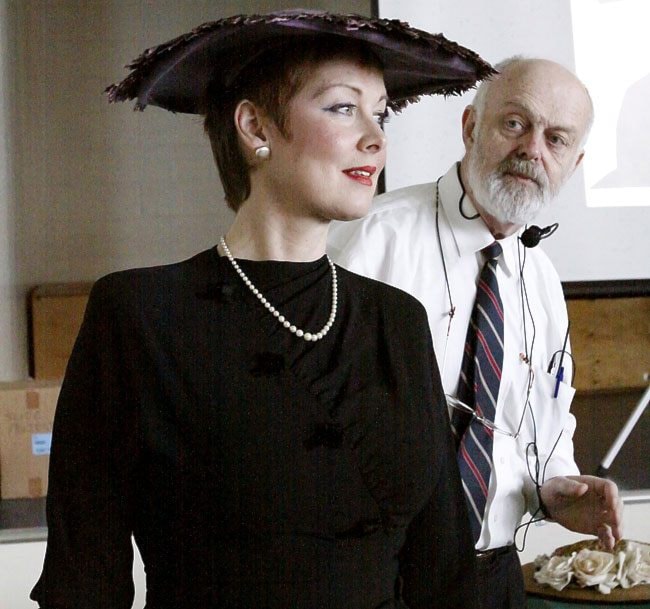In some First Nation cultures, parents don’t tell their children what to do.
Well, not exactly.
Instead of asking them to grab four plates, knives and forks, the parents ask the children to help set the table.
The children, having seen this done many times before, will go grab the plates and cutlery.
“They learn by seeing and doing, not so much by the words that go with it,” said Sharla Peltier, a speech-language pathologist and member of the Nipissing First Nation.
But because of this, the children don’t follow direction well, especially when asked to perform a new task.
“When kids go to preschool they’re expected to follow directions to a T,” said Peltier.
“Once you expose that to them in the classroom setting they pick it up really quickly, but it’s just that they’re not socialized that way.”
This can cause educators to jump to conclusions and think that there might be a problem with the child’s development.
Some kids get pushed into interventions and special education programs or are simply left to fall behind in class, when the real issue is cultural.
Peltier’s job is to educate the educators, getting them to change their programs to meet their student’s needs.
“You need to make sure the children know the language skills they need to be successful in school,” said Peltier.
“But we try to put it into that context instead of trying to get the home to change.”
Speech language-pathologists work with people to enhance their communication.
Problems with communication are often easy to spot.
There’s usually frustration, either in the child, the parent or the teacher, explains Peltier.
“That’s an indicator that I might be able to help.”
Traditionally, speech pathologists look at physical or intellectual problems that might be hampering communication, based on a medical model.
These days it’s evolving to look at the communication process in general - whether the kids are hearing, receiving and understanding the message.
Peltier has discovered that issues can arise due to how a child is socialized and raised at home because of different parenting styles and cultures.
Peltier has worked with First Nation communities in northern Ontario for the past 20 years.
“Some things that we might think are appropriate are not so inappropriate to expect that from their cultural background,” she said.
“A lot of tests that are used today don’t address those differences or needs.”
That’s not to say that aboriginal people don’t have non-cultural language impairments and speech disorders.
In fact, aboriginal youth under the age of 10 are more likely to get ear infections when they get a cold, said Peltier.
These infections can inhibit speech development and affect the way they pronounce things.
There are more than 600 First Nations communities and 56 indigenous languages across Canada.
Each community has a unique culture, language, political and spiritual tradition.
There are even differences among the same First Nation.
Ojibwa people living in the prairies have a different culture from those that live in the Great Lakes Region, said Peltier.
In some communities, children are expected to be seen and not heard - they should learn from listening to and observing the adults.
In other communities the children are expected to ask questions and participate more.
Because of these differences, Peltier recommends her process to her colleagues, rather than a set of guidelines.
This process includes getting out of the clinic and into the community to get to know the people and hear how they use language.
She also recommends getting to know the grandmothers.
“They can be tough at first, but once they accept you you’ll be accepted by the whole community,” she said.
“Trust is a big issue because of our history of colonization and oppression. Especially a non-native professional coming in and asking questions and testing our kids.”
Even for Peltier, who is an aboriginal woman, it takes time to earn this trust in a new community.
“You have to be visible and involved and show that you’re committed to the community,” she said.
“It’s not always easy.”
Peltier acknowledges there are a multitude of different non-native cultures living in Canada today.
But these types of cultural issues are easier to deal with for a Chinese person, for example, because they have a strong culture and language.
“With aboriginal people we don’t have that. We’re losing our language and losing our culture,” she said.
“So it’s different in that sense. It’s less cut and dry and the cultural and linguistic differences haven’t been recognized.”
Peltier originally wanted to follow in her mother’s footsteps and get into nursing.
However, she didn’t like the idea of having to do shift work.
At school, she noticed the speech pathology program and decided to do that instead.
Years later, she found out her family were part of the loon clan.
The clan system dictates someone’s role in the community, Peltier explained.
Loons are the people responsible for grassroots communications.
“They know what’s going on and are good at networking and organizing,” she said.
“As a speech language pathologist that’s exactly what I do.”
Peltier started to talk about her ideas eight years ago and some of them are starting to catch on among her colleagues.
Peltier gave a lecture at the speech-language pathologist conference in Whitehorse last week.
Of the 50 people that attended, about six of them were already doing similar work.
“There are people that get it,” she said.
The problem is that most of the funding for speech language-pathology programs comes from the government and is regulated by medical protocols.
This means that many of her colleagues find it difficult to have the flexibility to try new things.
Fortunately, many of those working in the Yukon get it.
“There are more aboriginal people here so I think they recognize the need to be flexible,” she said.
“They’re picking it up better than my colleagues in Ontario.”
Contact Chris Oke at
chriso@yukon-news.com
